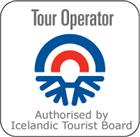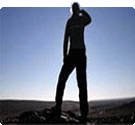
| Convert ISK |
|
|
|
|
|
|
|
|
| Reference only |

Hafnarfjordur
Hafnarfjörður - The town in the lavaThe town of Hafnarfjörður has grown up among lava which flowed from Mt. Búrfell about 7,300 years ago. As the lava flowed into the sea it formed strange and picturesque shapes, and the people of the town have placed their homes among these dramatic rock formation.
A growing town
Hafnarfjörður is Iceland’s third-largest community, with just over 21,000 inhabitants, not to mention the elves who are reputed to live in various places around the town! The town is expanding fast: new residential districts are growing up, as is a new commercial sector.
Welcome to Hafnarfjörður
Hafnarfjörður offers visitors a relaxed atmosphere, and plenty of activities such as whale-watching, horse-riding, and elf-spotting, as well as splendid Viking feasts. And a variety of cafés and restaurants offer something for everyone.
The people of Hafnarfjörður welcome you to their picturesque, relaxed town in the lava.
The many sides of Hafnarfjörður
Hafnarfjörður’s culture life has many sides. The Hafnarborg Institute of Culture and Fine Arts offers art exhibitions and concerts, while Hafnarfjörður Museum provides an insight into the town’s history.
Hafnarfjörður boasts an outstanding amateur theatre company. The ancient culture of the Viking Age may be experienced at Viking feasts at Fjörukráin and at the annual Viking Festival. In June each year the Bright Days arts festival is held, while in December the Christmas Village is opened.
And the work of artists from around the world may be seen at the Sculpture Park at Víðistaðatún.
Music life thrives in Hafnarfjörður, which has 15 active choirs, as well as school choirs. And rock music too is booming.
Friends of Hafnarfjörður
To become a Friend of Hafnarfjörður, all you have to do its pick up the phone and call the Service Centre at the Town Hall. Friends of Hafnarfjörður receive a free scroll certifying that they have become friends of Hafnarfjörður, and they are sent a regular newsletter from the town.
Hafnarfjörður is twinned with many communities: Akureyri in north Iceland, and Ilulissat (Greenland), Tvöroyri (Faroes), Frederiksberg (Denmark), Bærum (Norway), Uppsala (Sweden), Hämeenlinna (Finland), Cuxhaven (Germany), Tartu (Estonia) and Baoding (China). Hafnarfjarðar and Cuxhaven have been twinned for ten years.
Sports Town
Sports are an important aspect of life in Hafnarfjörður, which is known as the cradle of handball in Iceland. The first handball match in Iceland was held in Hafnarfjörður in 1925.
Hafnarfjörður boasts several leading handball teams, and also has outstanding athletes in athletics, gymnastics, swimming, soccer, basketball and golf.
Horse-riding is a popular sport in Hafnarfjörður, and the town also has a sailing club.
Elven town
Mysterious beings are said to reside in the lava fields of Hafnarfjörður – though not all can see them. Icelanders have long believed that rocks and cliffs were homes to elves and dwarfs, and in Hafnarfjörður these beings live in peace and harmony with their human neighbours. Many people say they have seen a woman in white, with a silver belt, who is said to live in Hamarinn, reputed to be an elven palace.
A woman who lived near Hamarinn told the following story:
She dreamed that she was invited into the rock of Hamarinn. A woman dressed in white led her through the splendid rooms of the palace. As they passed through the rooms, the woman saw many strangely-dressed people, who bowed to the elf woman.
This dream lends support to the legend that in Hamarinn live elves of royal descent.
There are many stories in Iceland of road-building operations being halted, when accidents have occurred which have been attributed to elves, objecting to the development. Such developments have often been altered to suit the elves: e.g. on Merkurgata in Hafnarfjörður an elven rock has been left projecting into the road, which narrows at that point.
The Hidden Worlds Map, which shows the supernatural sites of Hafnarfjörður as seen by psychic Erla Stefánsdóttir, says: “Elven beings can be perceived in gardens all over Hafnarfjörður, but the lava is particularly alive with dwarfs, gnomes and all kinds of elemental beings.” The Hidden Worlds Map is available from the Service Centre in the Town Hall, Strandgata 6, and tourist information centres in Reykjavík, and at Mál og menning bookstores.
Viking Town
For over a decade, Hafnarfjörður has played host to an annual Viking Festival at Fjörukráin. Vikings from around the world gather to take part in the festival. A colourful collection of artists are at the Viking Festival: artists, warriors, bowmen, wrestlers, woodcarvers, stonemasons, blacksmiths, storytellers and enchantresses, musicians and magicians. About 120 Vikings, both Icelanders and visitors from abroad, create an authentic Viking atmosphere. The festival usually takes place the week around 17th of June.
Fjörukráin offers a flavour of the Viking Age all year round, with its Viking Fests.
Reykjavik
Reykjavik, the capital of Iceland, is the country's largest city and the world's most northerly capital. The capital area includes seven municipalities in addition to Reykjavik itself, with a total population of about 180.000, of which about 115.000 live in Reykjavik.It’s been called Europe’s hottest capital. Slick advertising campaigns have championed the city’s famed nightlife. But there is more to Reykjavik than pubs and clubs. Reykjavik held the prestigious title European City of Culture in the year 2000; a welcome recognition of the energetic and colourful cultural life of the capital.
Reykjavik has the best of both worlds: the qualities of a modern, forward-looking society are complemented by a close connection to beautiful and unspoilt nature in the city's vicinity. The world’s northernmost capital is framed by the majestic Mt. Esja, which keeps a watchful eye on the city, and the blue waters of Faxafloi Bay. On a sunny day, the mystical Snaefellsjokull glacier appears crystal-like and baby-blue on the western horizon, while mountainous moonscapes spread to the southeast.
The population of the city is about 170,000 including its suburbs.
Reykjavik is spread across a peninsula with a panoramic view of the mountains and the Atlantic Ocean on almost all sides. In the summer, you can sit by the harbour at midnight and watch the sun dip slightly below the horizon before it makes its way up again.
Reykjavik is a great place to visit, whether for a restful relaxation, a spot of unbridled fun or generally to recharge your batteries. Energy, safety, health and wellness. Reykjavik is indeed Europe’s hottest (or is that coolest?) capital.
